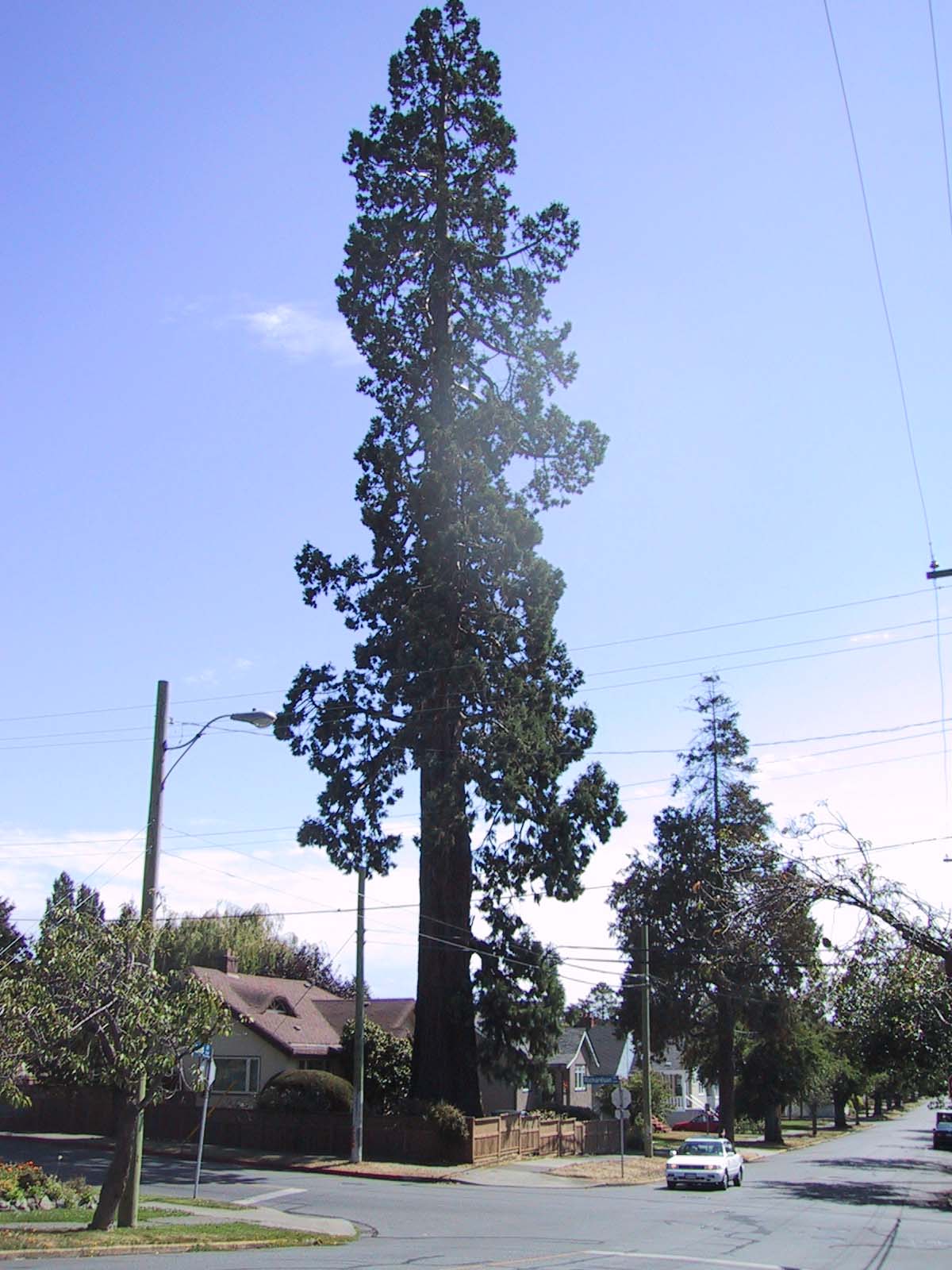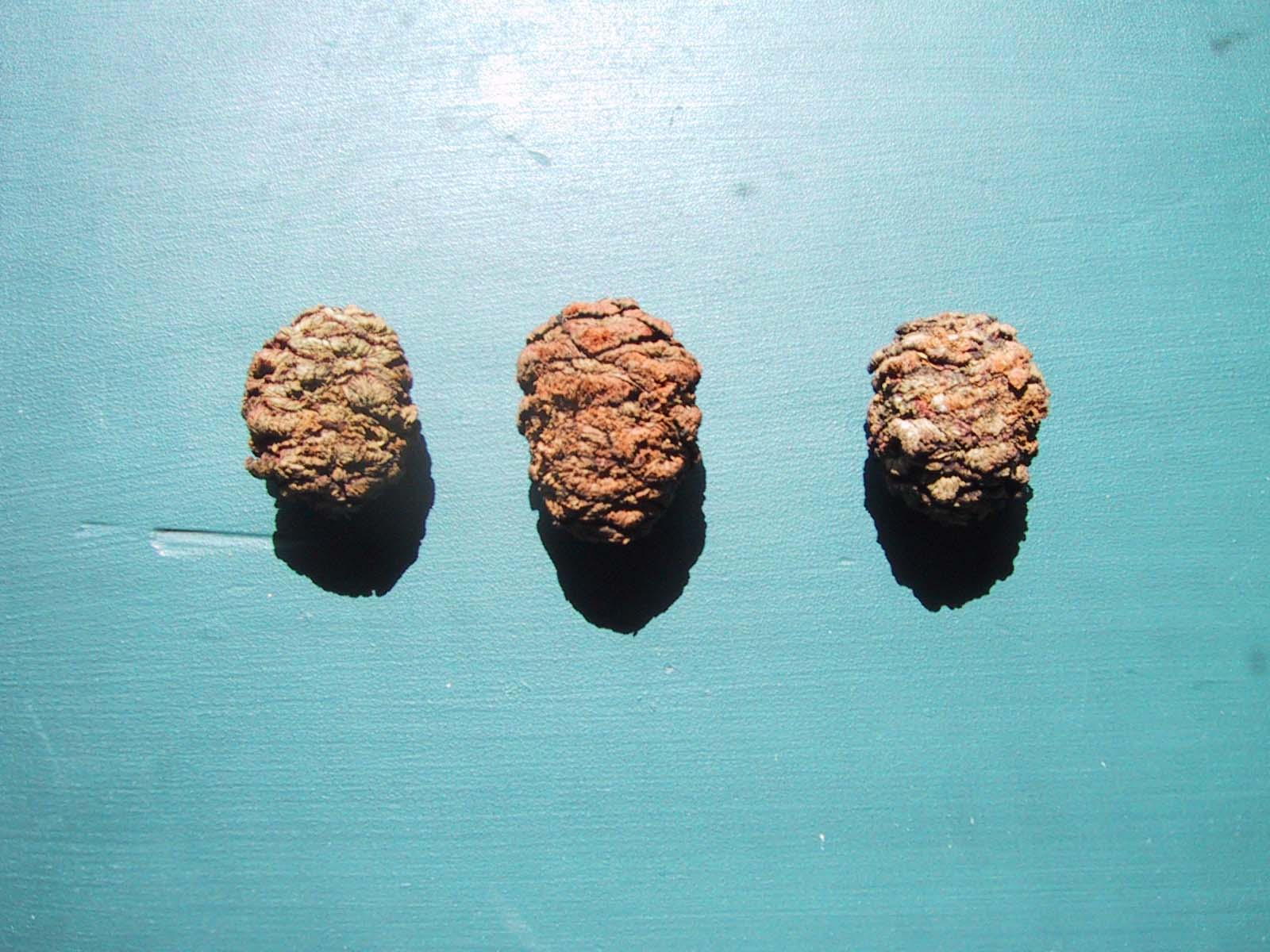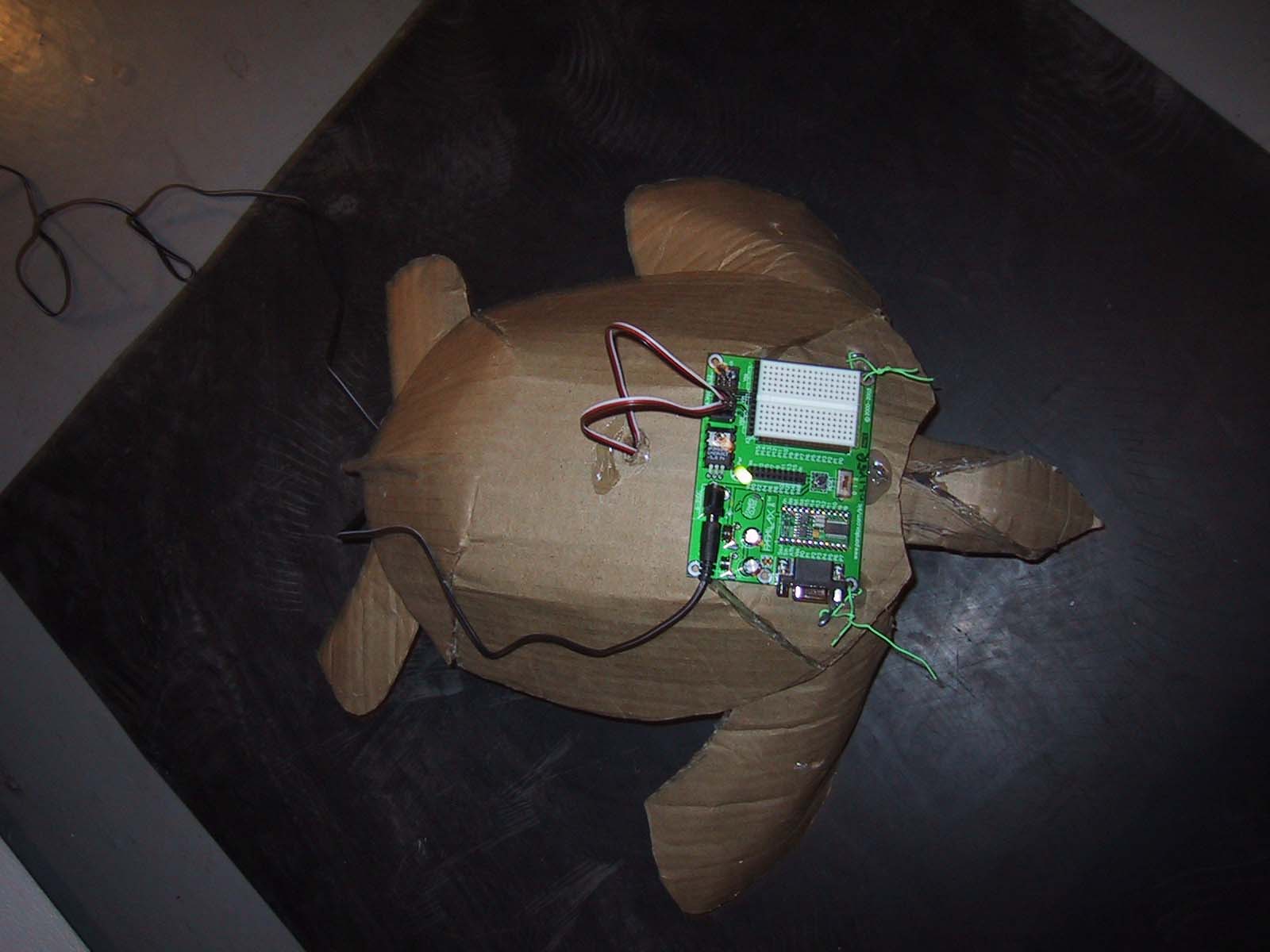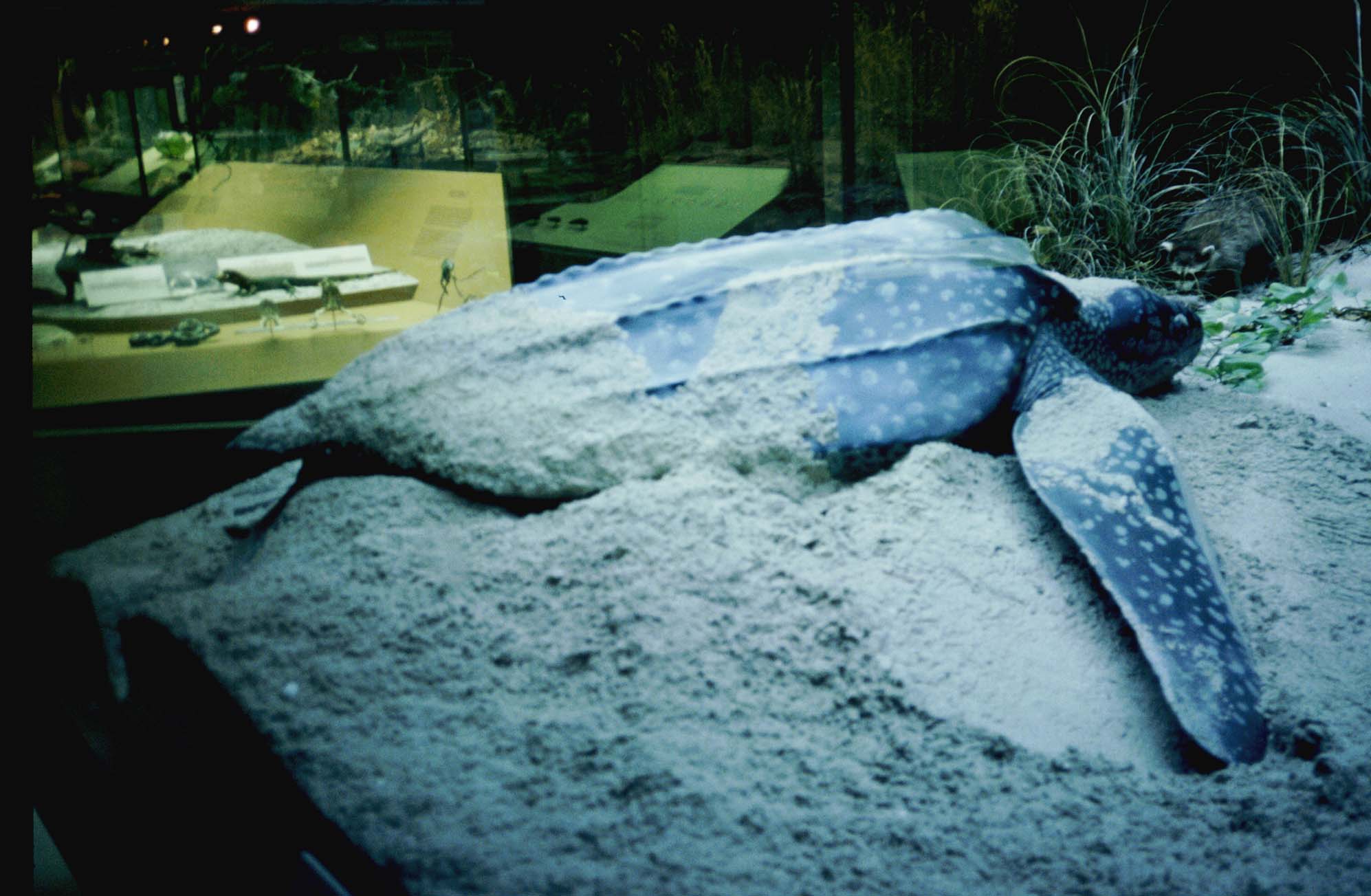
suburban sequoia
The Sequoias of Old Vicky:
August has been a month of travel for me. I’ve gone from Cortes Island to Victoria to Vancouver to Banff and then on back through Victoria to finally return to Cortes. I’ve been displaced, disjointed but elated, reveling in the deep patterns I’m starting to notice everywhere.
In Victoria (or “Vicky” as I’ve been calling it lately in homage to the neo-Victorian characters populating Neal Stephenson’s Diamond Age), I am often struck by the magnificent sequoias that grow scattered around that city’s bucolic streetscapes. They tower like massive sentinels, mistakenly left behind from some forgotten prehistoric age. The huge trunks and voluminous, coniferous spires completely dwarf the hapless bungalows and manicured lawns that appear to cower beneath them as if in awe of the sequoia’s primal and unstoppably eruptive, botanical energy. Sequoias should seem more at home in a landscape inhabited by brontosaurs and giant ground sloths rather than Vicky’s milieu of lawnmowers and minivans, yet their incongruous placement far outside their native environs of the Californian Sierras, is the product of both anomophilia and an abiding faith in the future.
The world’s largest tree in terms of overall mass, the sequoia caused a sensation when first discovered in 1853 and was the subject of great controversy over its naming that was (well) typically “Victorian“. The taxonomic wrangle pitted British botanists, who wanted to memorialize their war hero, the Duke of Wellington against the Americans who were (not surprisingly) outraged by the concept. The name got bounced back and forth between Wellingtonia and Sequoia, until the issue was finally resolved by the high-ranking French botanist Joseph Decaisne, who in 1854 published the species as Sequoia gigantea, after he unequivocally proved its close taxonomic relationship with the coast redwood, Sequoia sempervivens. American botanists were of course elated to see the British out-taxonomized by the French. In 1869 Joshia D. Whitney remarked:
It is to the happy accident of the generic agreement of the Big Tree with the redwood that we owe it, that we are not now obliged to call the largest and most interesting tree of America after an English military hero; had it been an English botanist of the highest eminence, the dose would not have been so unpalatable.

sequoia cones
Velocity Blues:
Whenever a young sequoia is planted somewhere, one can be sure that the person planting it won’t live anywhere near long enough to see it grow into its epic and voluminous maturity. So why plant a sequoia, or for that matter any tree that might take generations to mature? Why initiate any project that might take longer than the life of its initiator to complete? We seem to live in an age so immersed in a tyrannical (and shrinking) present that we have become almost completely un-moored from our connections to the future and the past. Too much blogging, for example, can exacerbate this kind of ad hoc twitchiness. I have on occasion actually wanted to *slow* down my life, so that I would have time to blog it properly because the blogging form is so essentially quid nunc. Lately, I find I am needing more time to think and then to synthesize my thoughts into some sort of coherent continuous entity, as opposed to responding to the raging present with a constant state of the jitters. As a result, my blog has gradually morphed from a conventional redux of the day’s events, into a kind of reflective monthly essay. I am noticing a kind of inverse proportionality between the rate of increase in the torrent of information that flows in from my RSS aggregator and the time that it takes me to compose a weblog posting.
At least since the dawn of Modernity, the art world has been terrorized by a cult of novelty that has created a concomitant need for an almost industrial pace of production. This relentless pressure has been the engine of both prolific innovation and prolific fluff. Walter Benjamin wrote about art’s “exhibition value” having overtaking its “cult value” and its resultant commoditization which (and here he quotes Bertolt Brecht):
fundamentally erases its past to such an extent that should the old concept be taken up again–and it will, why not?–it will no longer stir any memory of the thing it once designated.
In effect, the art then loses its own embodied history and becomes just about the immediate experience of viewing it, cut off from its underpinnings of time, space and cultural context, ready to be replaced by the next new thing extruded from the pipe. Which would be fine except that this commoditization and obsession with the next new thing diminishes the leisure of the present, by sandwiching it into an ever-narrowing gap between amnesia and our accelerated anticipation of the future.
This issue of time has been one of the greatest problems in explaining my own botanical interventions projects to funders and curators. These projects can take years to develop into something that may (or may not) resemble my original proposals and which are really about the dynamics of the work’s own accumulated history and the seething, chaotic interrelationships that emerge between its ecological and cultural components.
These extended time spans can drive my funders crazy, as I am rarely able to furnish *final* project reports within conventional fiscal timelines, because, in effect, the projects are never finished and are always changing in appearance and the way they interact with the communities in which they exist. I have been fortunate however in garnering support, not from the traditional institutions of art culture, but from neighbourhood activists and a few enlightened municipal bureaucrats, who share my fascination with the liminal between urban ecology and urban community, and who understand the time spans necessary for the botanical interventions to unfold.
Imagine my delight then, when I came across Brian Eno’s brilliant exposition on The Long Now, in which he documents his gradual dissatisfaction with art that lives out over short time spans and how he sees his own work as a sort of bridge connecting the present to the future as a continuous entity. He writes:
I knew a lot of young artists there who appeared mostly from Ohio it seemed, to make their fortune in New York. It was a very exciting time in New York. They were living an exciting life but their commitment to the city was absolutely zero. They planned to move on as soon as they could, or they planned to get a loft like my friend’s loft. At least there was no attachment to the idea of the city as a continuing entity. So I thought they lived in a very short Now, their sense of Now was from about the beginning of last week to the end of next week. And if you said what are you working on now they would tell you what they had been working on that morning, not what they’d been working on for the last couple of years or so – it was exciting but it was very narrow and that kind of narrowness in time – thinking slightly worried me, because it doesn’t translate into terribly productive social behaviour. It doesn’t encourage you to set in place projects and agreement s and arrangements between people that will flower over very long periods.
By directing our attention to deep time, Brian Eno, Bruce Sterling and the rest of the long now contributors offer a sobering change in focus away from the frenetic distractions of our manipulated quotidian news channel reality, towards an appreciation of a much deeper pattern matrix, containing at once the present in which we now exist and a myriad of other presents that have once been or have yet to be.
Landscape, in its timelessness and apparent immutability has always served as a spiritual anchor for those buffeted by the frailty of the human condition. So when the landscape itself changes drastically, right in front of our eyes, it can cause some serious anxiety. We are at a historical moment, where the pace and extent of obvious changes to our environment are verging on the apocalyptic. At the recent Society for Ecological Restoration International conference (at which I gave a short presentation on my restoration work), I learned that last summer, Switzerland’s glaciers lost up to 10% of their total mass and will be almost completely gone by the end of this century. A coordinator of the Eden Again Project which was set up to try to restore Iraq’s devastated Mesopotamian marshes, told the conference that the tree of good and evil, located at the junction of the Tigris and the Euphrates, has died.
The vast and ancient sea bird colonies of the Orkney and Shetland Islands have gone into a catastrophic free fall, with virtually *no* nestlings surviving this year as the entire North Sea ecology undergoes what is termed a “regime shift” due to global warming. Normally staid bird specialists are using such superlatives as ‘defying belief’ and ‘astonishing’ to describe this ornithological Armageddon while Friends of the Earth’s (aptly named) Tony Juniper warns us that
“this catastrophe is just a foretaste of what lies ahead.”
With the sea devoid of sea birds and the melting glaciers threatening to inundate coastal cities, one might be forgiven for lapsing occasionally into a fear of imminent death. Leeds University’s Professor Mike Pilling concurs, recently announcing:
Reuters recently cited a psychological study showing how the Bush campaign actually benefits from people’s fear of death, especially in regards to terrorism and that there is a contention the administration deliberately declares an imminent threat whenever the president’s approval ratings slip. In fact, Vice President Dick Cheney did this overtly, recently, warning Americans about voting for Democratic Sen. John Kerry, saying that if the Nation makes the wrong choice on Election Day it faces the threat of another (terrorist) attack. Apparently according to social psychologist Sheldon Solomon the author of the psychological study:
no matter what a person’s political conviction, thinking about death made them tend to favor Bush. Otherwise, they preferred Kerry.
But Solomon offers us some hope:
“If people are aware that thinking about death makes them act differently, then they don’t act differently,”
Well, alright then . . .
Ironically our fear of death might be the one thing saving some of the world’s most endangered wildlife. The New York Times notes that the heavily mined demilitarized zone between North and South Korea has become a haven for rare creatures, including spoonbills, cranes, Asiatic black bears, antelopes and possibly even tigers, making it one of East Asia’s most important wildlife refuges, because *people can’t go there.* Environmentalists are now lobbying to make the DMZ a world heritage site, against the stiff opposition of both North and South Korea. Ironically if the growing reconciliation between North and South progresses much further, this paradise of geopolitical interstice will likely be obliterated in the name of economic development.
I Break For Robots:
A few weeks back, I thought I would take a break from all of this seething consternation and learn how to build bots with my old pal Norm White. To my amazement, he hadn’t changed a bit since I saw him last over 20 years ago when I was just finishing up at the Ontario College of Art Back in those heady days, Norm and the rest of the Photo/Electric faculty inspired in us a deep love of hacking and coding. We were prepared to rip almost any piece of technology apart and subvert its functionality to our own bidding. At the UFO Workshop Norm introduced us to the intricacies of the Basic Stamp and other microcontrollers. With these tiny programmable brains, sculptures can be programmed to engage in complex movements and in effect become ‘sentient’ to their surroundings. I was able to cobble together a corrugated cardboard sea turtle which managed, with the help of its microcontroller and servos, to effect a kind of laborious egg-bound shuffle. Something about this little bot’s awkwardness and servitude to gravity, made me think I inadvertently captured some of the sad futility of the last of the living sea turtles, trying to haul their ancient carapaces up their last nesting beaches toward the orange electric glow of a hostile new millennium.

turtle bot

leatherback turtle
The much touted singularity seems like meager compensation for the annihilation of seabirds and sea turtles. After all we’ve had self-replicating, self-re-engineering DNA based intelligence since the Precambrian period, some 3500 million years ago. Still, technological singularity is an intriguing notion, be it ever so kludgy. There are some exquisite little self-assembling swarm-bots being produced by the European Community’s Future and Emerging Technologies programme that seem to point the way. And for when the planet completely degenerates into a giant cesspool, a team of British researchers is working on the EcoBot II–a “release and forget” robot that will generate its own power by eating flies, using sewage or excrement to attract them within range of its insect-sucking feed pumps. In the final analysis, maybe it’s the best we can do . . . .


